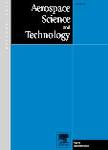版权所有:内蒙古大学图书馆 技术提供:维普资讯• 智图
内蒙古自治区呼和浩特市赛罕区大学西街235号 邮编: 010021

作者机构:Tsinghua Univ Sch Aerosp Engn Beijing 100084 Peoples R China
出 版 物:《AEROSPACE SCIENCE AND TECHNOLOGY》 (航宇科学与技术)
年 卷 期:2019年第84卷第Jan.期
页 面:799-811页
核心收录:
学科分类:08[工学] 0825[工学-航空宇航科学与技术]
基 金:National Natural Science Foundation of China [11572168 11872034]
主 题:Self-organizing control Artificial potential function Relative orbital elements
摘 要:Self-organizing control for satellite clusters is a challenging and promising problem which has drawn considerable attention in the recent past. The artificial potential function method has been widely used for self-organizing control due to its elegant mathematical analysis and simplicity. This paper proposes a set of self-organizing control rules for satellite clusters described by artificial potential functions, so that the reconfiguration, uniform distribution and collision avoidance operations can be achieved spontaneously. It may work regardless of the failure of satellites, attendance of new members or existence of space debris, and the corresponding communication and control system are completely distributed. Particularly, the artificial potential functions are written in terms of relative orbital elements derived from T-H equations, so that the self-organizing control can reflect relative motion dynamics, and guide the satellite along a fuel-efficient trajectory. The proposed method is especially suitable for highly distributed micro-satellite clusters and large-scale clusters to track moving targets, with few fuel cost and relatively high control accuracy, and it is applicable to clusters in either deep space or near-earth space. The stability of the control was proved by Lyapunov second method, and verified by Monte Carlo simulation. Finally, the comparison between self-organizing control and fuel-optimal control was made to demonstrate the performance properties. (C) 2018 Elsevier Masson SAS. All rights reserved.